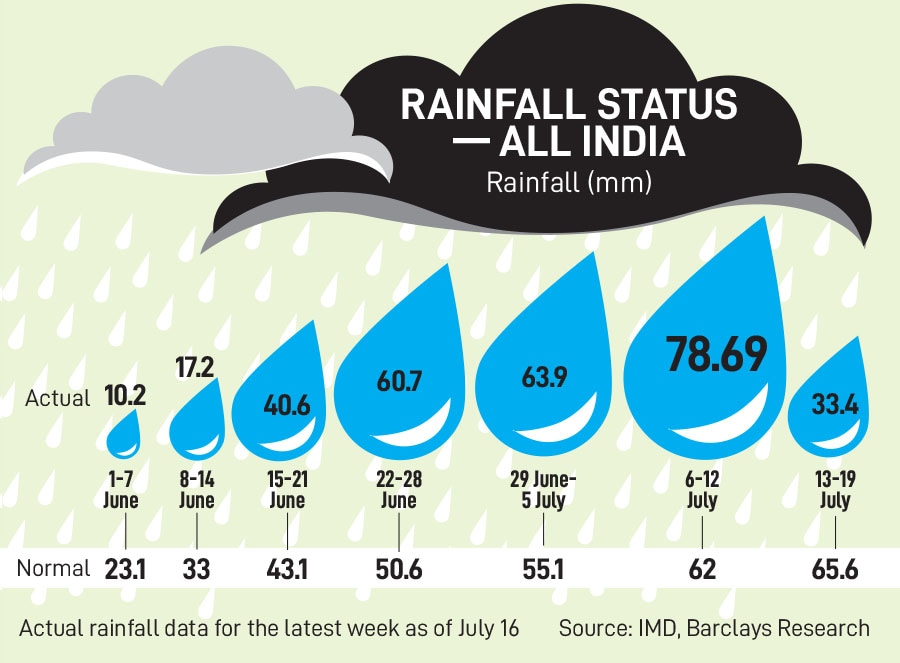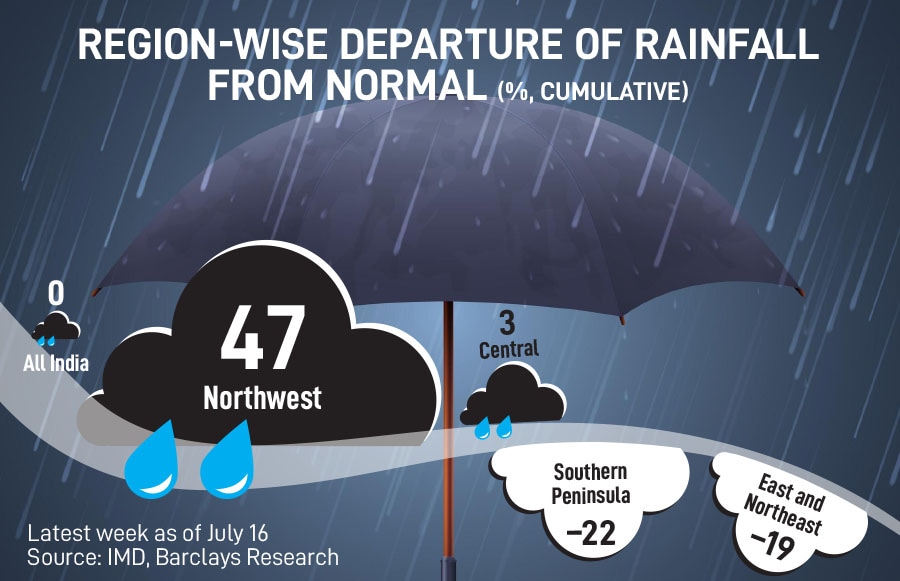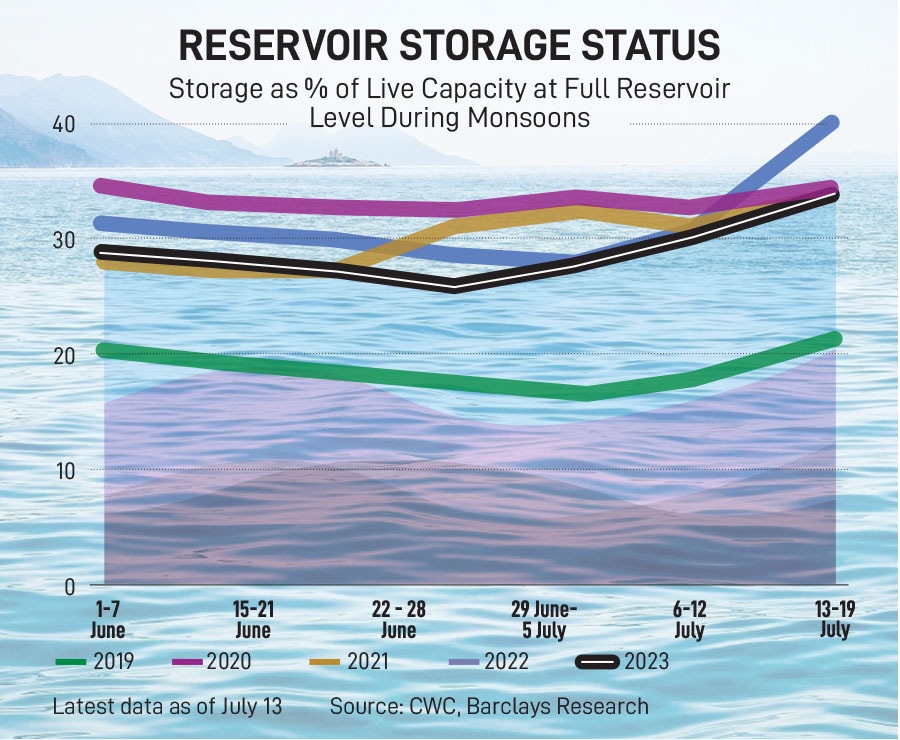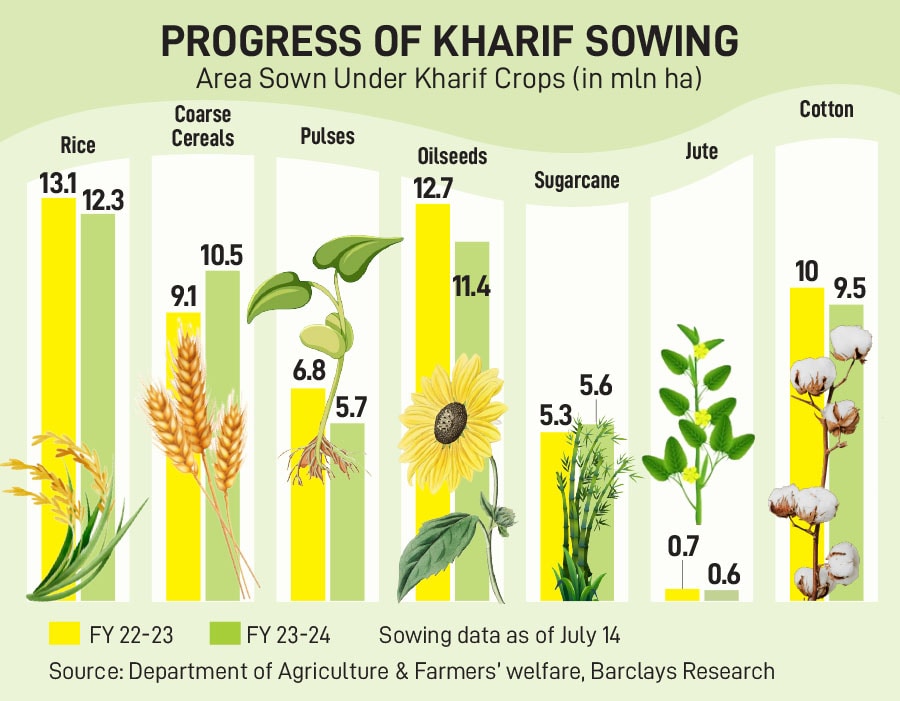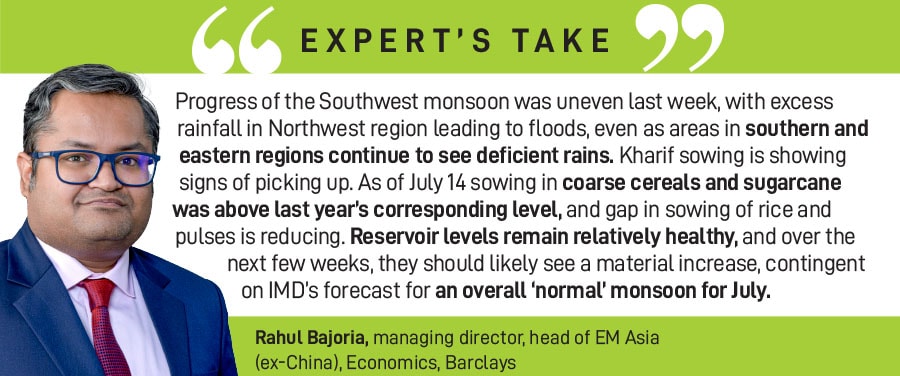
Rain Watch for July 13-19: Monsoon uneven, kharif sowing still lagging
Forbes India presents a weekly series Rain Watch where we simplify rainfall status, water reservoir levels and sowing pattern of kharif crops data analysis by Barclays. This is an overview of July 13-19
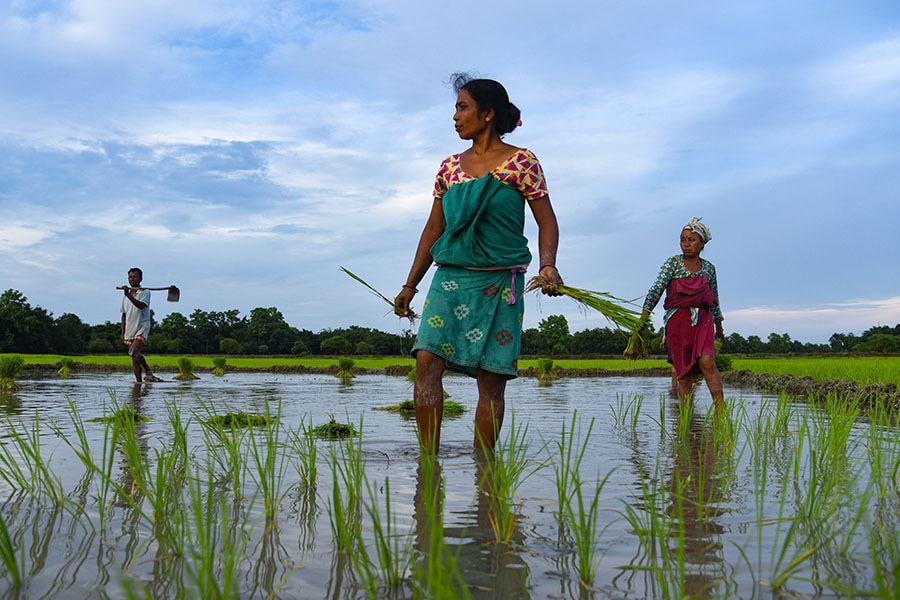 Kharif sowing is still lagging compared to last year, especially for crops like rice, pulses and cotton.
Image: David Talukdar/NurPhoto via Getty Images
Kharif sowing is still lagging compared to last year, especially for crops like rice, pulses and cotton.
Image: David Talukdar/NurPhoto via Getty Images
Overall, monsoon rainfall is slightly above normal levels in the week ending July 19, but an uneven distribution of rain has led to floods. However, kharif sowing is still lagging compared to last year, especially for crops like rice, pulses and cotton.
Deficits in the southern and eastern regions continued but decreased week-on-week, and the central region now has surplus rain. Cumulatively, between June 1 and July 13, pan-India monsoon rainfall was 1.4 percent above the long-period average (LPA), shows Indian Meteorological Department (IMD) data analysis by Barclays.
The IMD has said that active monsoon condition is very likely to prevail over central and adjoining eastern India during the next five days, starting July 16. IMD also warned that the likelihood of El Nino forming is more pronounced during the middle of the monsoon and might continue till the beginning of next year.
